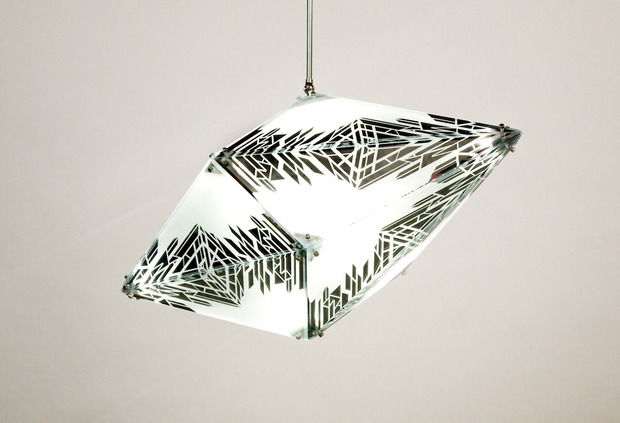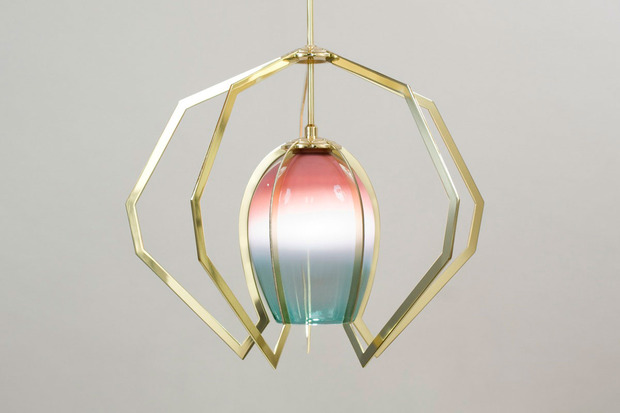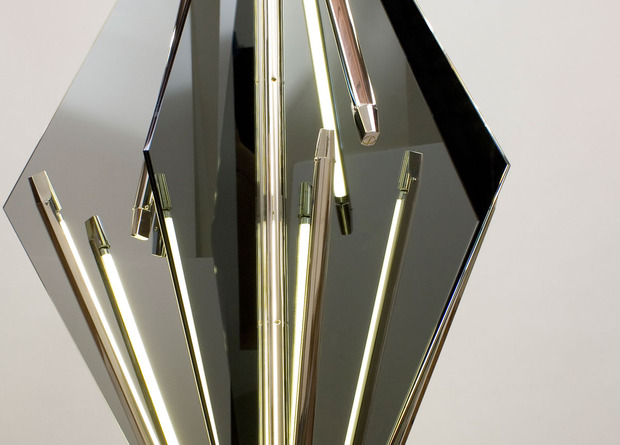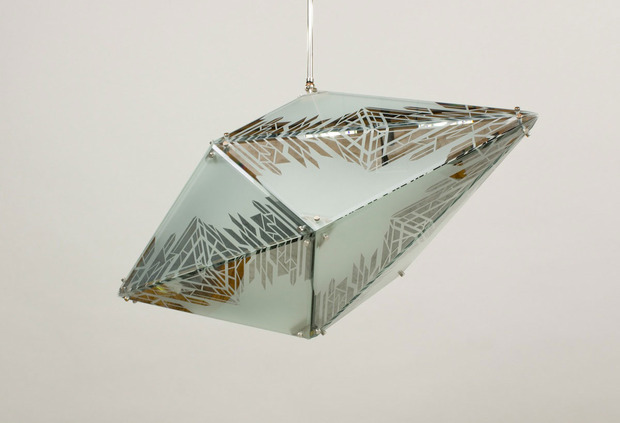Bec Brittain
The New York-based lighting designer’s flamboyant and playful solo show for NYCxDesign

by LinYee Yuan

Since establishing her own studio in 2009, New York-based lighting designer Bec Brittain has established herself with stripped down, crystalline forms in brass and glass. During this year’s New York design week, the designer showed a more flamboyant and playful perspective, debuting four new pieces in her first solo show at E.R. Butler’s SoHo showroom.
The exhibition expands on the design vocabulary established in Brittain’s SHY light and Maxhedron series—system-based structures produced on demand, hand-assembled locally and fully customizable. Mirrored glass and subtle patterning highlight a play between light and shadow, creating different effects when the fixtures are on or off.

The handblown glass globe of VISE, shown here in “Miami” fade, creates a soft glow contrasting with the hard edges of the brass scaffolding that surrounds. The “claws” create volume in space and add dimension to the simple piece.


The HELIX is a continuation of Brittain’s exploration of bars of unobstructed light, begun in her SHY light series. Custom brass hardware and LED tubes wrap around a central support. A stone counterweight anchors the piece in space and adds the softness of craft in an otherwise stark structure.

ECHO employs mirrored glass and fins of light radiating from a central axis. The LEDs are turned inward to mute the beams of light. Simultaneously, the mirrored surface amplifies the glow creating depth in the lighting.

A follow-up to the Maxhedron series, the crystalline configuration of the TESSELLA are dressed in decorative patterns created with etched mirror panels. Snake skin patterning creeps across the tessellated panes of mirrors and architectural geometries pulsate at the seams of the form. The designs are experienced differently whether the fixture is on or off—the simple two-dimensional patterns give way to a dynamic three-dimensional form.
Images courtesy of the designer











